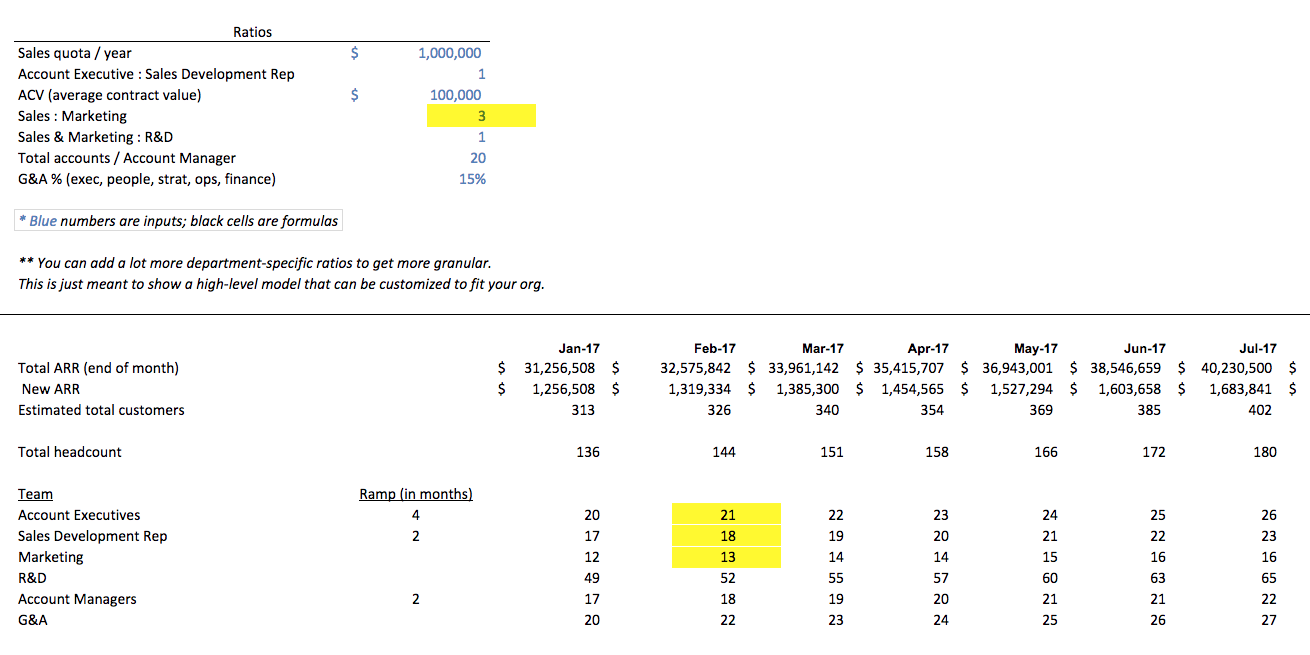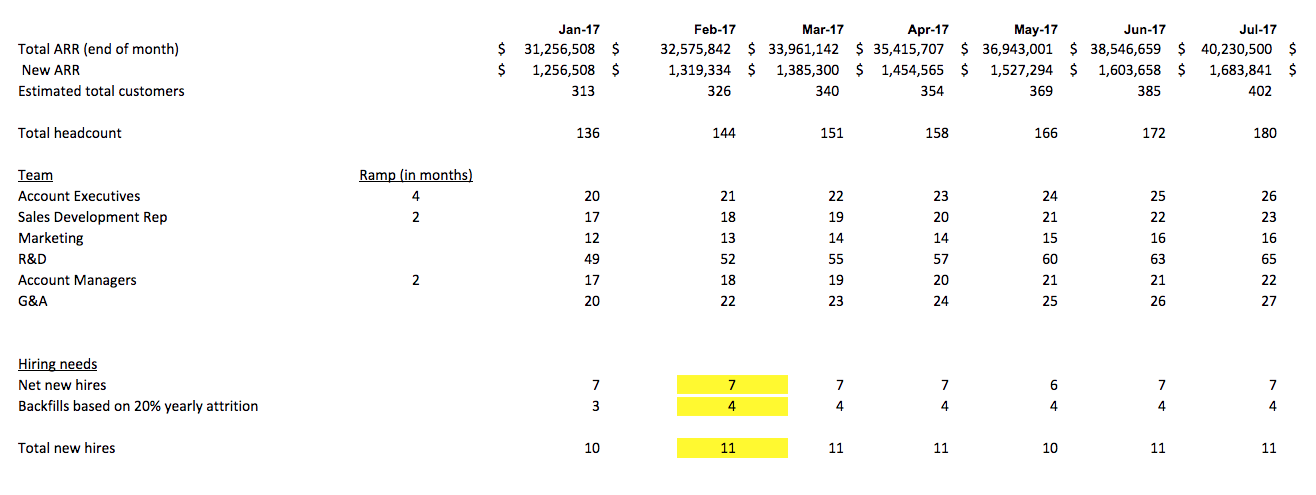Creating a dynamic headcount plan

5 mins, 23 secs read time
A Headcount Planning Model for SaaS Businesses
One of the biggest trends I’ve seen in our industry over the last few years is the shift towards a more strategic and consultative Talent Acquisition function.
In most businesses, the biggest impact on the bottom line is human capital. Headcount is often the #1 biggest line item in the budget and also the biggest driver of a company’s success. This creates an incredible opportunity for recruiters to have a meaningful impact on the business. More and more, I’ve seen recruiters take on consultative roles with their executives to maximize their organization’s investment in human capital.
A great example of this can be seen during headcount planning. Rather than simply filling a list of open jobs, as a member of a new People team, recruiters are taking a strategic approach to hiring and headcount planning.
One tool that can help you make educated recommendations on which hires need to be made—and when—is the dynamic headcount plan. In this post I’d like to share a framework we use here at Greenhouse for how you can create a dynamic headcount plan for your organization.
Download the sample model here and see how to use it below.
What is a Dynamic Headcount Plan?
A dynamic headcount plan is a spreadsheet that models different business scenarios. It alters the headcount as you change your revenue goals and people ratios, offering a real-time understanding of the team required to hit each revenue target.
It’s important to note that a dynamic headcount plan isn't an exact science. It’s not meant to be taken as a prescriptive recruiting plan, but rather should be used to inform the high-level phasing and number of people the business will need over the course of the year. This should always be triangulated with the list of needed headcount provided by each department head.
Why Use a Dynamic Headcount Plan?
Hitting business goals is very intertwined with hitting hiring goals. That means organizations need to prioritize having the right people at the right time. If you’re lacking in developers, you won’t hit your product milestones on time. If you’re short on salespeople for a month or two, your quota capacity will be below your revenue target. To decide who to hire when, you need the ability to toggle between different scenarios.
As a recruiter, understanding the impact and implications of the hires you make can help you prioritize roles and serve as an advisor to executives.
Where Do I Begin?
Start With the Revenue Numbers
What matters most is having an idea of your group’s revenue targets, since this is what the rest of the numbers will be based on.
Define the Major Ratios
SaaS businesses are easy to model because most functions can be simplified with ratios (as a guiding framework—NOT as an exact science). Here’s a sample set of ratios to start with.

When you’re defining ratios, remember that these ratios should change as the business changes. As you’re starting out, leads might come more easily because you’re targeting early adopters and faster buyers. In that case, your Account Executive to SDR ratio could be 2:1. As you move more up-market and get into longer buying cycles, that ratio might level out at 1:1.
You can also get very specific with these ratios and break down each department further than I do in this post. You could also use “spend” instead of “headcount” in your ratio.
For example, you could do a developer to product manager ratio, a UX to product manager ratio, or a developer to QA ratio. This will largely depend on each department head and how they think about their group.
Ramp Time
You’ll need to estimate a “ramp-up” time for the roles that require learning on the job. For example, at Greenhouse, we allow a five-month ramp-up for salespeople before they are hitting their monthly quotas. In other words, if we have a revenue target for this month, we need to have hired the correct number of AEs five months ago. We factor this into our model.
Model Your Salespeople
Once you have the numbers above, you can create the first version of your model by putting in the new revenue targets per month. The model I shared lets you change monthly growth rates, but you could just as easily manually put in each month’s revenue target.
From there, you back into how many salespeople you need. If we assume a five-month ramp time, then you need to look at June’s revenue goals to figure out how many salespeople you need in January.
Start with Sales and Use Department Ratios
Sales is the most straightforward way to start since all headcount can be based off of the revenue targets. I like to model everything off of the Sales numbers. So, if the Sales to Marketing ratio is 3:1, your Marketing team formula should link to that and the sales team.

Translate All of That into Hiring Needs for the Business
The last piece of the puzzle is figuring out how many new hires your recruiting team needs to make each month to ensure you’re setting up your organization to hit business goals. You can get a ballpark number of this by adding up the total new hires plus some estimate for backfills due to attrition.
This should help you plan your recruiter capacity. If you see a big spike in new hires needed a few months from now, that should be a signal that you might need more recruiting resources today.

Takeaways
Recruiting leaders are taking more strategic roles in organizations. A really impactful way to do this is by being a part of headcount planning conversations.
Using a dynamic headcount plan can help recruiting teams anticipate hiring needs throughout the year and staff their teams appropriately.
Download this model as a starting point to create your own dynamic headcount plan.
Learn more about how you can take part in headcount planning and other strategic discussions in our white paper, “Applying Employee Lifetime Value to Articulate the ROI of People Practices.”
